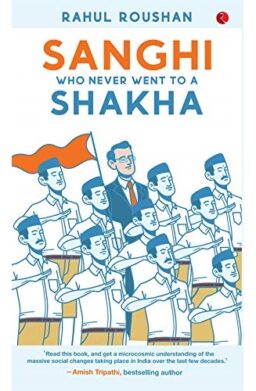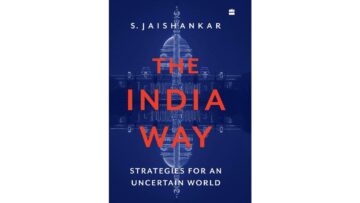A few years back, I was engaged in a discussion with a non-Gujarati friend over 2002 riots. For her, Gujarat had become “laboratory of Hindutva”, a term frequently used by Left-leaning intellectuals, by then, resulting in the riots for the first time.
She was very much wrong in her observations and facts. First, she didn’t even know that the Congress party was patronizing the gangsters like Abdul Latif who were infamous for killing people in broad daylight. Also, the fact was unknown for her that Latif an elected representative.
Second, during 1969, the year when my foi (father’s sister) was born, there was a curfew of a fortnight and my grandmother had to compulsorily stay in the hospital all the time. But, still she was oblivious towards such riots. 2002 Gujarat Riots were not the very first riots in India, or Gujarat, but were treated as such.
Third, some riots in the city happened over issues like India-Pakistan match. But, the religious supremacist ideology behind solidarity to back another country was never a point of discussion.
Why am I talking about this?
Because when Rahul Roushan, an IIMC graduate, came to Ahmedabad for his course at IIM-A, then he heard about such facts. Roushan, who had even worked in media for more than a couple of years, didn’t know about such complex reality till then, as he admits in his book ‘Sanghi Who Never Went to A Shakha’.
I could suddenly remember that conversation after reading this.
Now, the question is whom to blame for it? Of course, our mainstream media, politicians and many others who have set one particular narrative.
As Rahul Roushan has narrated in this book how he became aware of other viewpoints of the Gujarat riots only after coming at IIM-A, it is the case with most of the people residing outside Gujarat. That is how conveniently stories are being created!
Most people have heard the stories of victims telling what happened to them in relief camps. With all due empathies to victims, but it is often the case that stories from one side are focused primarily. The author is right in his observation that, ‘Hindu victims are numbers, Muslim victims are narratives.’
In the name of ‘responsible journalism’, as Roushan refers it, media also adds some angles which are absent on the ground. He recalls the instant when his employer company manufactured a fake story to portray Hindu-Muslim unity. It was the time when the VHP had organized a large gathering at Ayodhya.
‘In such a scenario,’ he writes, ‘responsible journalism meant airing reports about how the lives of common people were being negatively impacted by the VHP drama. It also meant airing reports that argued that people didn’t care about mandir politics. It would have been the best to air reports about Hindu–Muslim unity to show how the VHP didn’t have any popular support and how they were dividing people.’
He further writes:
The local reporter had sent a report about some Muslim garland sellers who used to supply garlands to a few temples in Ayodhya. The report claimed that these garland sellers had been doing this job over many generations and they didn’t want their work to suffer. In fact, the handwritten report claimed that the garland sellers didn’t want to stop serving the Hindu temples, as they apparently derived some divine pleasure from it.
But, when Roushan started working on the story after watching videos, he found something else. He derived on the conclusion that the angle of ‘divine pleasure’ was fabricated, though the concerns about businesses getting impacted were indeed there. This story had only that part true, rest was the imagination of the local reporter.
Roushan admits:
Do note that what was aired was fabrication and manipulation, but it was a fair thing to do because in our minds we were acting responsibly. I had essentially helped create a fake Hindu–Muslim harmony story, similar to the various stories I had grown up hearing.
This is how a particular narrative is kept alive. You don’t even realize that you become an active player in keeping this narrative alive.
The story was aired multiple times on the TV channel. It was a script I had written and it had my voice-over too. Again, I received rewards that come naturally when you toe a particular line. That’s how the system itself is designed to perpetuate a particular narrative.
This is just one instance among the many where the ‘particular narrative’ is being built now on the name of ‘responsible journalism’ by media.
Then, in the book, Roushan recalls his experiences as a journalist, an entrepreneur, and a combination of both. Born in Patna, grew up in Bihar Sharif, educated in Patna, Delhi, and Ahmedabad, the experiences are worth reading. He, a ‘Congressi Hindu’ in his own terms, narrates how he transitioned from an apolitical guy to a libertarian one to an assertive Hindu.
This is not just his story, this is the story of many such Indians who have witnessed the societal changes happened during these many years.
The rise of Narendra Modi – and also social media – has broken the monopoly of the ecosystem which was controlling the narrative since years. But also thanks to internet, whenever you are refuting any narrative built by this same ecosystem, you’re called a sanghi, a member of right-wing Hindu organisation RSS, often in a derogatory manner.
The book is the story of Roushan who embraced the label of sanghi, which he was detesting once. They’re simply dubbed as sanghis even though they have nothing to do with sangh by any stretch.
The book is refreshing, page-turner, and filled with usual Roushanian sarcasm. It should be read by left-liberals – to check where they went wrong in all these years – and also by non-leftists – to know where they should not go wrong.
Because, it is upto the latter to assure ‘Let there be no one who writes, “Memoirs of a Libtard Who Never Went to JNU.”’
Disclaimer: The opinions expressed in this article belong to the author. Indic Today is neither responsible nor liable for the accuracy, completeness, suitability, or validity of any information in the article.










